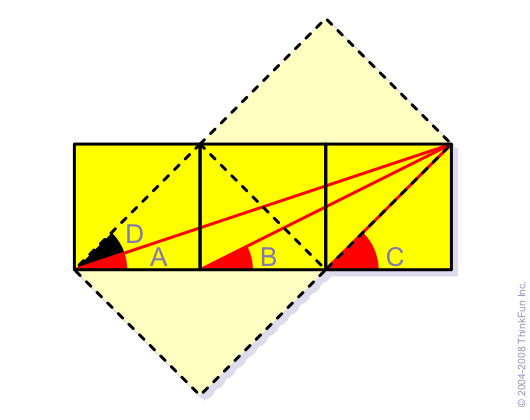#mathsonamug pic.twitter.com/nnMowcsljj
— Dr. Sean (@seanelvidge) January 11, 2016
This is a classic Martin Gardner puzzle. One solution is (from the Guardian):
“Construct the additional squares indicated by dotted lines. Angle C is the same as the sum of angles A and D, since they are both made by cutting a square in half along the diagonal. Angle B equals angle D because they are corresponding angles of similar right triangles (made by cutting a rectangle made from two squares in half along the diagonal). That means B can be substituted for D, which automatically makes the C equals the sum of A and B.”
